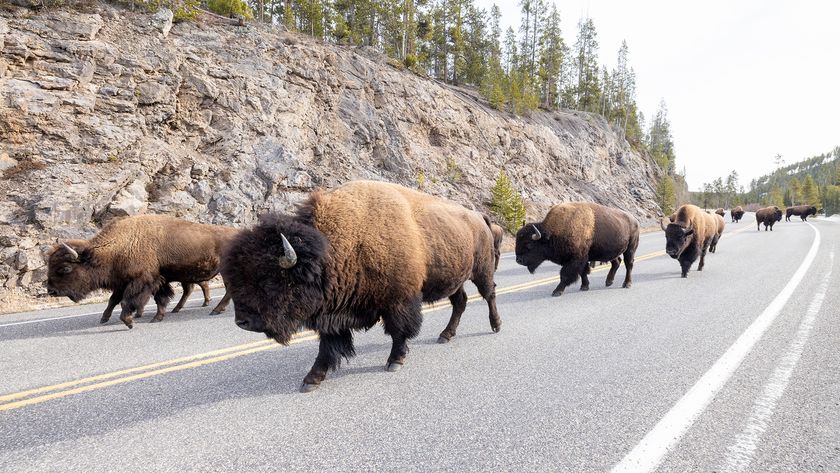Wolves Lose Hunting Skills in Mid-Life
The savvy hunting skills of wolves decline when they reach mid-life, suggests a new study.
The finding refers to wolves reintroduced into Yellowstone National Park in 1995, after they had been hunted out of the area in the 1930s. The reintroduced wolves typically live until nearly 6 years old. But according to the new research, which will be published in the December issue of the journal Ecology Letters, the wolves' ability to kill prey peaks when they are 2 to 3 years old.
The study researchers say the finding challenges a long-held belief that wolves are at the top of their game for their entire adult lives. Even so, the results make sense.
"Wolves are not perfect predators," said Dan MacNulty, a postdoctoral researcher at the University of Minnesota. "They lack physical characteristics to kill prey swiftly, so they rely on athletic ability and endurance, which diminishes with age."
MacNulty added, "They're like 100-meter sprinters. They need to be in top condition to perform."
For the Yellowstone wolves, performing well means hunting elk. After following the wolves since 1995, the researchers found there isn't a strong correlation between the number of wolves in the park and the number of elk killed. Rather, elk numbers fluctuate based on the age structure of the wolf population at any given time. So when the wolf population is skewed toward the older animals, over age 3, the elk are killed at a lower rate. For every 10 percent rise in the proportion of wolves older than 3, the kill rate declined 10 percent to 15 percent. The drop in the elk population is also partially due to drought and grizzly bears, MacNulty said.
While a high ratio of old-to-young wolves may benefit elk, it could strain the wolf population overall. That's because when older wolves lose their mojo and can't hunt successfully, the younger wolves share kill with them. But if the population becomes lopsided with mostly senior citizens, there won't be enough young workers to support their elders, MacNulty said.
Sign up for the Live Science daily newsletter now
Get the world’s most fascinating discoveries delivered straight to your inbox.
Next, MacNulty hopes to create mathematical models to figure out the long-term effects of changes in the age structure of Yellowstone's wolf population on the elks.
- Top 10 Deadliest Animals
- Video – Grizzly Bear With Cubs Charge a Wolf
- Images: Endangered and Threatened Wildlife












